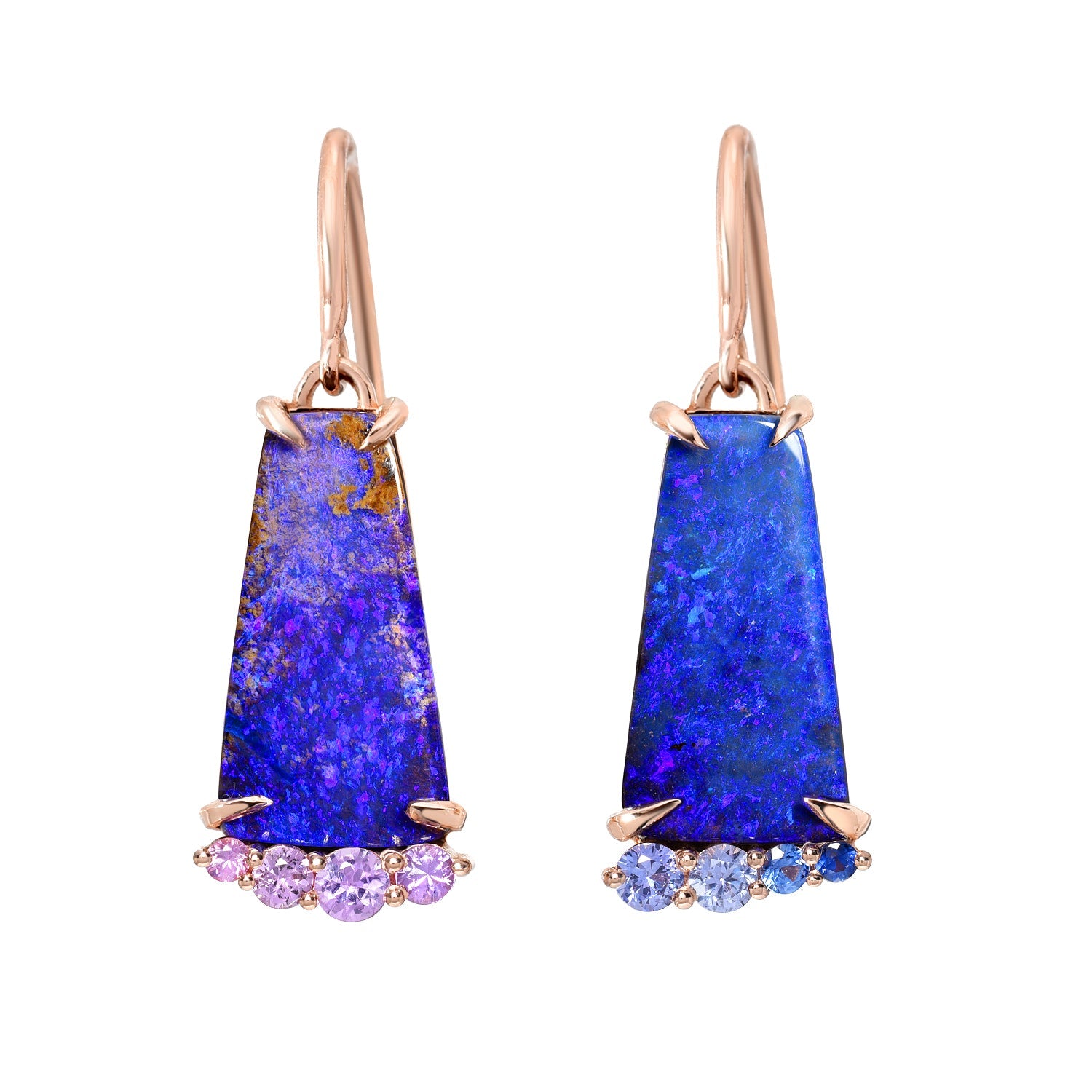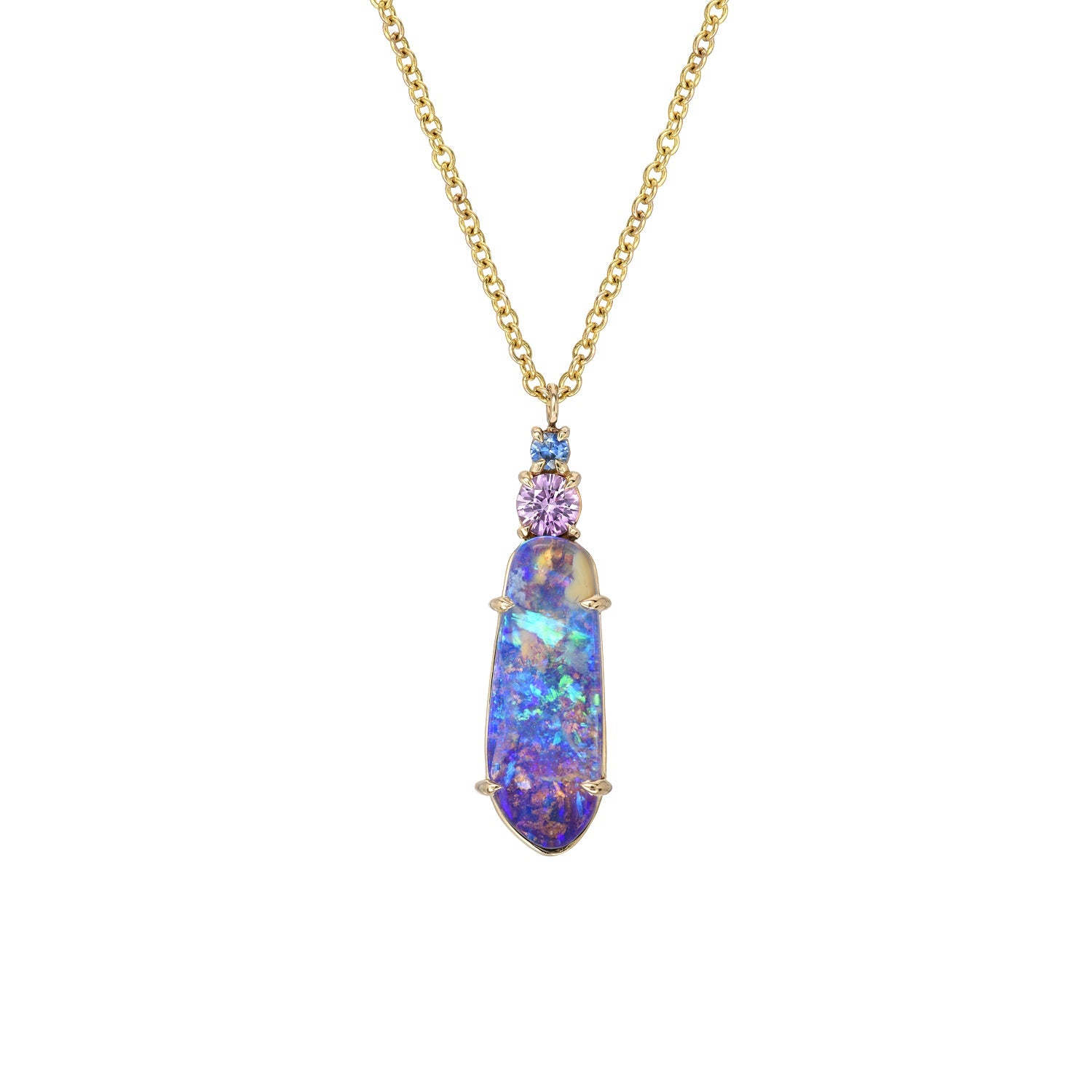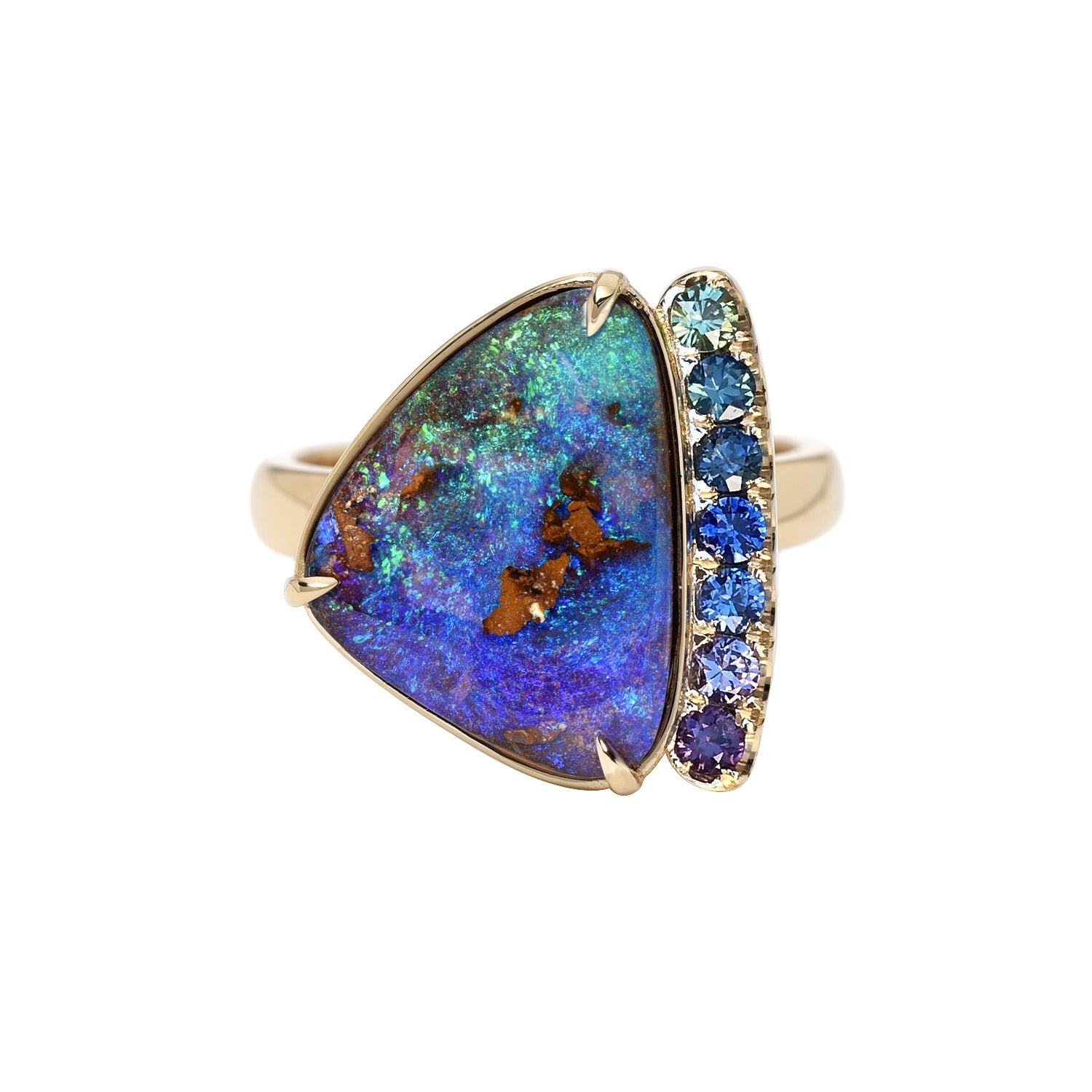
Opal Dos and Don'ts
luis gomezShare
Humanity’s passion for Opals has persisted throughout the ages. These magnificent gemstones have been popular for centuries and part of their allure is due to their unparalleled beauty and their rather esoteric and bizarre history. Opal’s history, from its humble beginnings in Roman Marketplaces to its unusual branding in the Dark Ages, is absolutely fascinating. Unlike some of their gem-contemporaries, such as diamondsand sapphires, Opals have a play of color that results in a unique and captivating show of varied hues and tones, with an unforgettable luster and shine. To maintain that luminescence, it's important to know how to properly care for them — how to treat opal jewelry, the dos and don'ts of maintenance. In this article, we’re going to give you a cheat sheet on all you need to know in order to easily care for your necklaces, earrings, rings and other opal jewelry and keep it looking amazing for years to come.
Opal — beautiful and delicate
Unlike some other popular gemstones, (diamond being the most extreme comparison) Opals are a delicate gem, susceptible to scratches, crazing, or even breakage. Opals are a hydrated amorphous form of silica — their water content may range from 3 to as much as 30%, however, most stable Australian Opals carry up to 10% water content. Their significant water content is part of what makes them such delicate stones. On the Opal Mohs scale, Hardness of Opal is designated as between 5 and 6.5 — this is similar to the hardness of glass. The Mohs scale is a qualitative scale that labels minerals from 1 to 10. It takes into account the material's scratch resistance and relative hardness, positioning minerals accordingly, above those they can scratch. The scale was introduced in 1822 by German geologist and mineralogist Friedrich Mohs in his Treatise on Mineralogy.
The Mohs scale takes into account not only whether a mineral or rock can be scratched or “hurt,” but by what material. It’s important to note that the scale doesn’t account for how brittle a gem may be. For example, emeralds are in the beryl mineral family and rank 7.5-8 on the Mohs scale — so they’ll be hard enough to scratch anything ranked below them, but their brittle nature still leaves them susceptible to breakage if hit at the right angle or with the right force.
It’s also important to note that although the minerals appear evenly spaced on the scale, the difference in hardness for each interval is not equivalent. For example, at the scale’s peak, we find a diamond at a 10, and corundums just one step away at a 9. However, diamond is actually harder than corundum, many times over. While diamond occupies the rank of ‘hardest’ on the scale, talc, with a Mohs hardness of 1, is the least hard.

Opal lands right at the center of the scale. This means that depending on use, they can be worn daily, but need certain levels of care and consideration. For example, if worn as an Opal necklace, Opal earrings, or an Opal brooch, and you’re gentle with your jewelry, daily wear should be okay. If you plan to wear an Opal ring on a daily basis, you’ll want to be more careful about the piece you get, and be realistic about your lifestyle and whether or not this is the right option for you, as our hands (thus rings) tend to take more abuse in our daily lives than other parts of our body. Opals can last a lifetime and can even be handed down as beautiful Opal heirlooms from one generation to the other, by following a couple of jewelry care guidelines.
Dos and Don’ts of Opal Care
Don’t get Doublets or Triplets Wet
It is not recommended to get Opal doublets or triplets wet. Why? The process of creating these Australian Opal stones requires a form of adhesive be used between the layer of precious opal and the backing upon which it is set. Immersing these types of Opal stones in water can result in the dissolution of the glue, damaging the stones, or if they do remain intact, water absorption can leave a cloudy residue visible through the layer of natural opal. For this reason, it’s recommended to avoid water contact with Opal doublet or triplet jewelry.
Don’t Get Ethiopian Opals Wet

Much like with Opal doublets and triplets, it’s in your best interest to keep Ethiopian Opals away from water. Discovered only in 1994, Ethiopian Opals are relatively new on the market. They are beautiful, with a spectacular play of color — they both look and behave somewhat differently than Australian Opals. A key difference is their volcanic origin (rather than sedimentary, like Australian Opals), and their hydrophane (water-loving or water-absorbing) nature. Australian Opals are non-hydrophane. What this means is that Ethiopian Opals are porous, and will absorb water, when given the opportunity. When this happens, their fire can extinguish.
Although it is well known that given time to fully dry out (typically 1-2 weeks), their color is supposed to return, here at NIXIN Jewelry we have worked with Ethiopian Opals and have had mixed experiences. On some occasions, the fire does return in full. Other times, it returns in part, or not at all and the stone remains dull and cloudy. And other times, we’ve had Ethiopian Opals that began with rainbow fire atop a white base — after water exposure and a subsequent drying period, we found the fire to fully return, however, the base came back as a brownish-orange, rather than the pearly white we had invested in the stone for. Based on our experience, we highly recommend avoiding water exposure should you choose to invest in Ethiopian Opal jewelry.
Solid Australian Opals Can Get Wet
Because Australian Opals are non-hydrophane (non-porous) they will not absorb water, making water exposure harmless. Having said that, much water exposure may include other chemical contaminants - like chlorine in a swimming pool or shampoo in the shower - so it is still recommended to remove Opal jewelry before such exposures. Not only that, but it helps to mitigate any potential physical damage that might result. Water alone, however, does not damage a solid Australian Opal.
Want to know more? Read up on if you can you shower with opal!
Don’t Wear Your Best When Playing Tennis
Never wear Opal jewelry while playing a sport or engaging in manual labor or other rigorous activity. Opal can be scratched by dirt particles, in the case of gardening, or crack under force, like being hit by a ball. It’s even prudent to remove your jewelry when sleeping.
Do Select the Right Type of Opal Jewelry
The setting of Opal jewelry can work in your favor to protect the gemstone — just like those cell phone cases you protect your new iPhone in. Consider the type of person you are, the type of lifestyle you lead, and then - based on that assessment - retroactively imagine the Opal jewelry that might best fit your routine. For example, a bezel setting on an Opal ring can help protect the stone’s edge. But an Opal pendant necklace or pair of earrings like the ones below, instead of a ring, maybe a better choice if you are hard on your hands.
Dalliance Crystal Pipe Opal Drop Earrings
Do's and Don’ts of Rings
The truth is Opals look amazing in rings. They bring a certain magic to your fingers, and you have the luxury of gazing into your stone every time you look down. They have the ability to brighten your day. Still, rings need to be treated with extra care. Be sure to consider the design — does it have sharp edges? Look prone to getting caught on things? Is the stone a mere sliver or does it have enough depth to be sturdy? Does the bezel or the girth of the prongs look like it will protect the Opal? These are all things to consider when purchasing an Opal ring.
Do talk to your Opal Supplier
When you buy an Opal piece from a jeweler, gem dealer, or even an Opal cutter, try to get advice on its care from them. Not all jewelers are familiar with the nuances of Opal, the many types that exist, and the differences between them. As you can understand from what you’ve read above, it’s important to know the type of Opal you’ve invested in because different types may require slightly different care. And those differences in care can make a difference in the longevity of your Opal jewelry.
Do Not Oil - But Solid Australian Opals will be Okay
Oily substances don’t affect solid Australian Opals, however, they will build up a layer of grime and can appear unsightly. So, unless you want to have to clean your gemstones regularly, we would advise you to take them off when applying face creams, lotions, and perfumes. Oils may be detrimental to the appearance of other more porous Opals, so avoiding exposure to such would be sensible.
Do Clean Opal Jewelry as Needed
Australian Opal Jewelry can be gently cleaned at home without the help of a professional. Using a mild detergent (avoid other chemical and cleaning agents), lukewarm water, and a very soft cloth (we recommend microfiber) you can give your opal jewelry a touch-up. Should you ever feel the need for more professional cleaning, you can take it to an Opal cutter to polish out scratches that may have accrued over time, or to a Jeweler. Just be sure they know how to handle Opals and will not place your jewelry in an ultrasonic cleaner that can crack Opal gemstones.
Do Check the Setting
It’s always a good idea to check your mountings from time to time. Not just with Opal jewelry, but with any fine jewelry. It’s not unusual for a setting to loosen over time, with wear — particularly with a prong setting. Just take a look at your piece, and make sure everything is still intact and secure. If you can’t tell, you can always reach out to the vendor you purchased from or visit a local jeweler to confirm the setting is still secure.
Do Avoid Rapid Temperature Change
Though Opals can endure a certain degree of both cold and heat, it’s best advised to avoid exposing them to rapid changes in extreme temperatures. Doing so can damage the stone. As long as the area you’re storing your piece is not overheated you should be okay — hot lights might crack the stone.
Do Store It In A Sealed Bag
If you’re not planning to wear your Opal jewelry for a long period, it’s advisable to place it inside a plastic bag with a damp cloth to prevent dehydration, separate it from other items of jewelry in order to avoid scratching.
At NIXIN Jewelry, the first thing we do with our Opals is assess them for the type of jewelry they are best suited to — then we let our dreams design. If you’ve been dreaming of one-of-a-kind Opal jewelry, come explore. We’ve got so many ideas to share with you!





